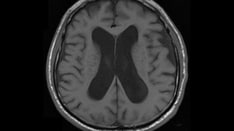Twelve cases of meningitis caused by rat lungworm infection (angiostrongyliasis) were reported by the Centers for Disease Control and Prevention (CDC) in the August 3 issue of the Morbidity and Mortality Weekly Report.
The CDC advised clinicians to consider the possibility of angiostrongyliasis (infection by Angiostrongylus cantonensis) in cases of eosinophilic meningitis, especially for patients who live in the southern United States, who have traveled outside the continental United States, or who have a history of eating raw or undercooked snails, prawns, or crabs, or of consuming raw vegetables and/or uncooked vegetable juices.
"The majority of patients in this series had subjective fever, generalized weakness, headache, and [cerebrospinal fluid] pleocytosis consistent with meningitis," Eugene W. Liu, MD, and colleagues write. "Most also had presence of eosinophils in both peripheral blood and [cerebrospinal fluid], and hypoglycorrhachia, which is usually associated with bacterial, fungal, or tuberculous meningitis. All 12 patients eventually developed CSF eosinophilia, as did all hospitalized patients during a 2000 outbreak of eosinophilic meningitis caused by A. cantonensis among travelers to the Caribbean."
The 12 cases were identified from 16 presumptive cases submitted to CDC from California (six cases), Texas (four cases), and Utah, Colorado, Arizona, Alabama, Tennessee, and New York (one case each). Eight cases had a history of travel to endemic areas outside the United States in the previous year; six cases had no such travel history, and travel history was unknown for two patients.
Possible sources of exposure included raw vegetables for six of 11 cases (including vegetables from a local garden in three cases), eating raw snails, living where snails were present, prawns, cooked crab, and exposure to slugs in a toddler who crawled in a yard known to have slugs.
Lettuce is of particular concern, according to the authors. The CDC advises close attention to washing it thoroughly, as well as to removing snails, slugs, and rats from areas near houses and gardens.
Peripheral eosinophilia (>600 eosinophils/mm3) was present in 10 of the 12 patients at first examination. All 12 patients had pleocytosis. Magnetic resonance imaging and/or computed tomography imaging showed brain abnormalities in eight of 11 patients, as well as spinal cord abnormalities in five of six patients and optic nerve abnormalities in two patients.
The damage reflects the progression of infection described by Wang and colleagues in a 2008 review. Rats are the definitive host for A cantonensis. Larvae are passed in the rat feces and swallowed by snails or slugs, which are intermediate hosts. The larvae develop into a more advanced, infective stage and are shed by the snails and picked up by transport (paratenic) hosts, such as shrimps, land crabs, land flatworms, frogs, or monitor lizards. Humans can become infected by eating the snails or the transport hosts or by consuming vegetables the snails or slugs have contaminated.
Once swallowed, the infective larvae invade the intestinal tissue (causing enteritis), pass through the liver, and move through the lungs, causing cough, rhinorrhea, sore throat, malaise and fever. In about 2 weeks, the worms reach the central nervous system, causing eosinophilic meningitis and eosinophilic pleocytosis as well as infiltrating lymphocytes, plasma cells, and eosinophils in the meninges and around intracerebral vessels.
Wang and colleagues write, "The physical lesions of tracks and microcavities caused by movement of the worms can be found in the brain and even in the spinal cord. The larvae can also move to the eyes and cause ocular angiostrongyliasis with visual disturbance such as diplopia or strabismus in many patients."
The new CDC report notes that A cantonensis infection has been observed in snails in Florida and Louisiana; rats in Louisiana, Florida, and Oklahoma; and other vertebrates such as opossums, nine-banded armadillos, an American miniature horse in Mississippi, and captive exotic primates in Louisiana, Florida, and Alabama.
No specific treatment for A cantonensis infection currently exists. Most patients in the CDC series were treated with systemic steroids to shorten the duration of headaches. About half received albendazole, but use of anthelmintic drugs is controversial, according to both Liu and colleagues and Wang and colleagues.
Liu and colleagues conclude, "Health care providers in the United States, especially those in areas in the southern United States where autochthonous cases have been reported, need to be aware of the possibility of angiostrongyliasis in patients with eosinophilic meningitis. Ingestion of gastropods or locally obtained raw vegetables contaminated with A. cantonensis larvae in the southern United States, even in the absence of a travel history, should increase provider suspicion for angiostrongyliasis."
One coauthor reported grants from Allergan for research outside the submitted work.
Morb Mortal Wkly Rep. 2018;67:828-828. Full text
Medscape Medical News © 2018 WebMD, LLC
Send comments and news tips to news@medscape.net.
Cite this: Eating Raw Veggies Linked to Meningitis From Rat Parasite - Medscape - Aug 09, 2018.










Comments